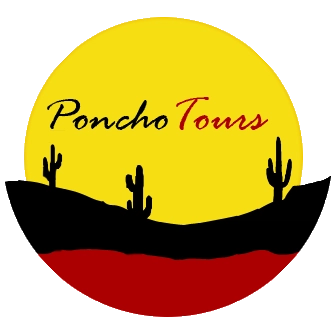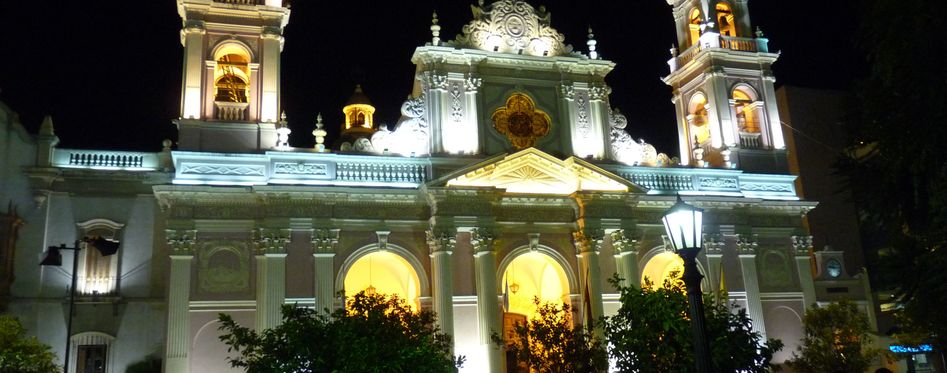When you are organising your tour of Argentina, after enjoying a tango show in Buenos Aires, you musn’t miss the most typical feature of a night out in north west Argentina: the peña.
A tour we think you'll love
A peña is traditionally a gathering of any kind, but it has become synonymous with musicians meeting to play traditonal Argentine folk music, and is one of the essential things to do in Salta city.
Unlike in my home country of the UK, folk music here is not a fringe interest. It’s more like in Ireland, where it’s wrapped up with the traditions and history of the area, and ancient instruments endure to the modern day.
The peñas in Salta date back to colonial times, at least as early as the 18th century, when gauchos herding cattle across the Andes and travellers along the Camino Real between Buenos Aires and Lima would stop overnight in giant carpas (tents).
After a quick catnap, in the absence of social media (or even newspapers), they would swap stories with other travellers, someone would pic up a guitar, another a drum (bomba), and a third an accordion (bandoneon), and the peña would commence.
To this day, the traditional folk combo comprises these three essential elements: sometimes the guitarra may be supplemented or replaced by a charango (small five stringed guitar), and there is often a violin or flute. In Jujuy province, because of the strong Andean influence, musicians sometimes add pan pipes.
Carpas endure as well, though they’re now daytime parties held in huge warehouses outside Salta city during carnival time (January and February).
The focus of Salta nightlife is in Balcarce street, roughly a 15 minute walk from the main square of Plaza 9 de Julio.
From 9pm every night, the three blocks down from the railway station are heaving with publicists brandishing menus for their restaurants or dancers in traditional gaucho garb trying to tempt you into their peña.
When you visit Salta for the first time, it’s best to walk up and down the street and see what catches your eye (or ear): some peñas are bigger, showier productions, others more low-key.
La Vieja Estacion is probably the best known as it was among the first of the Balcarce venues 20 odd years ago, but it can get full of Buenos Aires pensioner bus parties.
The menus in the peñas tend to revolve around traditional northern specialities: empanadas, tamales and humitas: it’s not gourmet and might not be especially memorable. It’s often best to eat early nearby eg in the excellent Jose A Balcarce round the corner in Necochea/Mitre before heading off to listen to the music.
Venturing further afield from the Balcarce, my favourite venue is the Casona de Molino on the western edge of town, which I revisited recently for the first time in years.
It has a more freeform feel: there are definitely “fixture” musicians, but the baton is passed around, with everyone taking turns to play. The grand old seventeenth century house comprises a warren of rooms, almost all with their own band, but the best place is out in the courtyard which is bigger and livelier (and where you can still have a conversation while the music is playing).
It has the atmosphere of an Irish pub, with the requisite colourful characters, and a drunkenness which never tips over into nastiness.
A new rival to the Casona is Casa Grande on the south side of town. A smaller affair, it only started just before Covid: but, like the Casona, it’s in a historic old colonial house, with the action entirely in the courtyard.
When I went last year for the first time, a succession of acts played very short sets on a main stage: so it’s a bit more formal than the Casona.
For both the Casona and Casa Grande you need to get a local cab: they’re too far to walk from Salta city centre. (Food, incidentally, is decent in both venues.)
A polar opposite to these traditional venues is the self-titled “mega peña” La Panaderia de la Chuña: which is much more of a spectacle; it felt almost like an old fashioned variety show when we went many years ago, with a comedian, ventriloquist and folk dance troupes.
It’s in a cavernous old warehouse lower down Balcarce street, on the south side of Plaza Guemes. If you can bear the arch self publicity of its owner “La Chuna” (apparently he looks like a bird of the same name), whose face is plastered all over the photo montages which fill the gaps between acts, it’s an interesting contrast to the more traditional experiences.
The biggest folk festivals in Argentina are held during carnival time: in the wine region of the Valles Calchaquies, the Serenata a Cafayate in February is several nights of outdoor folk (and some modern crossover) bands, always finishing with the headliner El Chaqueño Palavecino, once a singing bus driver from the north east of Salta province who is now Argentina’s biggest folk star.
Other folk festivals worth checking out if you are in the Cordoba region during the Argentine summer are at Cosquin and Jesus Maria, both in January. The latter also incorporates rodeo style horse displays.
And if you’re travelling to the Quebrada de Humahuaca on the road north to Bolivia, many bars and restauants in Tilcara, Humahuaca and Purmamarca have excellent peñas throughout the year.







